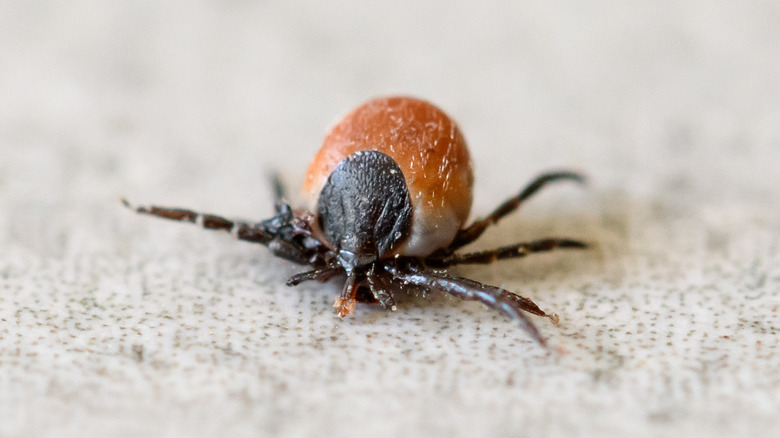Here's Where Ticks Are Most Likely To Lurk Around In Your House
Nobody likes finding critters in their home, but some are worse than others. Ticks are one type of home invader that can send a shiver up your spine when you find them. On top of that, they tend to lurk in your home in inconspicuous places, so it may take some investigation to locate them. One surprising place is in the baseboards.
Though ticks may appear to be insects, they are arachnidslike spiders and scorpions. However, unlike spiders or scorpions, ticks feed off of a live host. They suck on blood from mammals in order to live. By doing so, they can transmit diseases, including Lyme Disease and Rocky Mountain Spotted Fever. Consequently, checking your home for ticks is essential to keep your family and pets safe. Though they are mostly thought to be active in warm weather, many ticks can survive cold winter months and will go dormant to survive. They will hide in tall vegetation, soil, or certain parts of a house.
Check your baseboards for ticks
Ticks like to hide in places they won't easily be found — inside and outside of the home. One of the first places to check is along your baseboards. These are the long vertical planks of wood or vinyl that cover the area where the wall and the floor meet. Ticks can get into cracks and settle in baseboards, so it's important to seal up any crevices you see. Ticks don't purposely try to get inside a warm home the way mice do in the winter. However, they can enter via the skin of mice or rats that find their way inside.
Just like when ticks hide in your yard in the grass, vegetation, or leaves, the inside of baseboards is a cushy, warm, and often safe place for them. They can set up shop there and go dormant until warmer temperatures arrive. They can also lay eggs inside baseboards too. Eggs may look like tiny black dots, however, tick droppings can look like that as well.
Ticks may hide on your pets and in pet areas
A quick trip outside in a grassy area can result in ticks being unknowingly led into your home. Ticks most often get carried into houses either on clothing, shoes, or even on the hair and skin of children and adults. They can also come in by crawling onto your pet's fur.
Ticks are difficult to spot on pets, especially if they have dark or long fur. To keep ticks out of your house, children and pets should be checked for ticks every time they come in from being out in grass or piles of leaves. You should also wear long pants, long sleeves, and a mosquito repellant. Though you may be vigilant about protecting your dogs and cats from ticks with preventatives from your vet, a tick can still hop on your pet and get a ride inside your home. For this reason, it's important to check the pet's bedding and nearby areas where they sleep. Brown dog ticks can often be seen crawling on curtains, door frames, wall hangings, molding, and curtain rods near pets' beds. They may also crawl into crevices on the floor around where your dog or cats hang out the most.


